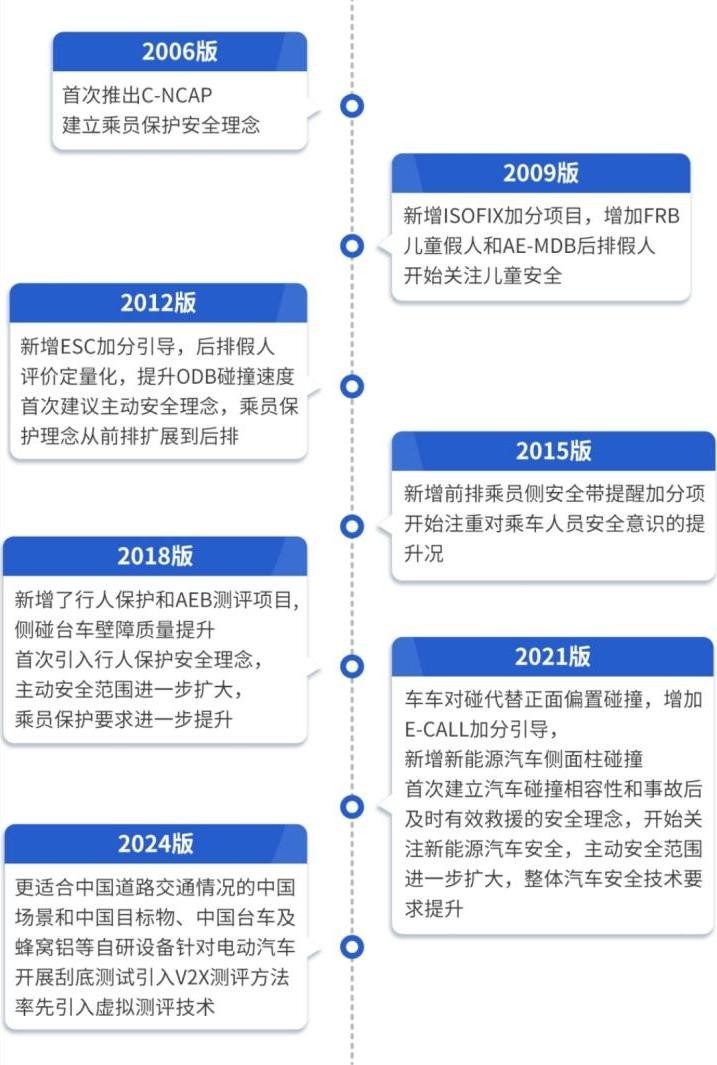HOME > Technology
Global Collaboration in Automotive Evaluation: Decoding C-NCAP - China's Solution for Automotive SafetyPublished: 2025-10-15 16:26:02
When cars upgrade from mere "means of transportation" to "travel carriers" that meet diverse demands, what force is safeguarding the safety bottom line of this transformation? In October, the 2025 World NCAP Conference will be held in Shanghai, China. Representatives from global NCAP organizations will gather together to explore the future direction of automotive safety. Looking back, the "Chinese solution" for safeguarding travel safety has long been engraved in the 19-year growth trajectory of C-NCAP.
Since the establishment of the first NCAP system in 1978, the global automotive safety evaluation system has evolved in a coordinated manner. The development of China's New Car Assessment Program (C-NCAP) is not only an absorption of international experience but also a structural innovation based on local realities. With systematic "Chinese wisdom", it has reshaped the dialogue between regional safety standards and global governance.
Key word ①
Breaking the Deadlock and Establishing Innovation
From regional insights to global contributions
The C-NCAP was led by the China Automotive Technology and Research Center. It was launched in 2006 based on fully drawing on the experience of international NCAP and in combination with the actual situation of road traffic and automotive safety in China. Since its establishment, it has been endowed with a profound understanding of local demands and forward-looking judgments on technological paths, continuously contributing Chinese wisdom to global automotive safety.
The global NCAP system has long focused on the protection of front passengers. However, C-NCAP has keenly perceived the importance that Chinese families place on rear passenger safety during travel and has become the world's first NCAP regulation to incorporate rear passenger protection into its core evaluation. This measure not only fills the scenario gap of the global security evaluation system, but also provides a reference for the subsequent upgrades of institutions such as Euro NCAP.
In the 2021 version of the regulations, C-NCAP was the first to adopt the more advanced APLI leg shape to conduct pedestrian protection tests and set limits - this content was later adopted by the 2023 version of the Euro NCAP regulations, becoming a representative case of "reverse output" in China's automotive safety assessment.
Key word ②
Iterative update
Form a closed loop of continuous improvement in automotive safety in China
For the past 19 years, C-NCAP has always been based on China's reality and relied on the CIDAS China Road Traffic Accident Database of China Automotive Technology and Research Center to build a cycle mechanism of "data-driven - evaluation-driven - technology implementation". Data-driven, that is, analyzing real accident data, identifying key safety issues, and then formulating C-NCAP test projects; Evaluation-driven, that is, through C-NCAP star ratings, to encourage automakers to enhance their safety technologies; The implementation of technology means that car manufacturers introduce more models equipped with new safety technologies to the market, allowing consumers to use safer vehicles. This cycle repeats itself, forming a closed loop of continuous technological improvement in China's automotive safety, making safety evaluations truly fit the road scenarios in China.

CIDAS data research shows that there are four major challenges to road safety in China at present: a high proportion of accidents involving vulnerable road users (VRUs), complex accident scenarios due to regional and urban-rural differences, the need to improve compatibility with large and small vehicles, and insufficient protection for women and the elderly. In response to these issues, C-NCAP plans to give priority consideration to them in the design of the 2027 version of the regulations. The passive safety section research covers more protection plans for different body types, genders, ages and sitting postures (such as reclining seats, positions after AEB braking). The active safety section plans to add a "mistakenly stepping on the accelerator pedal" test to address human error accidents in the context of an aging population trend.
From "benchmarking against international standards" to "basing on the actual situation of China's road traffic", C-NCAP has become an "engine for upgrading automotive safety" that suits the characteristics of China's traffic - it not only promotes the continuous improvement of domestic automotive safety levels but also provides a key "Chinese model" for the global NCAP system to address diverse safety challenges. At the 2025 World NCAP Conference, the sharing of China's experience will help the global NCAP system better address regional challenges and accelerate the realization of the vision of "zero-casualty transportation".
